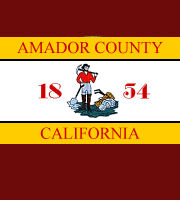





|
|
148 Main (Campi Building), Jackson, California | ||
|
Was the building - and call it the Campi house - built before 1854? Did it survive the "great fire" of 1862? And other fires, calamities and time itself? It was shorter once and one story until a second story rose and an extension made it longer. It has always stood by Fletcher alley to its south, But on its north side, where side, where cars park now, other houses stood and later, a brick macaroni factory was. |
|
|
|
Without research in old deeds and other documents what does the building itself tell us? its two-foot-thick walls betray its age.... Jackson's great building boom with "fire proof' brick began in the late spring of 1854. Logan has seen no fact that any brick rose before. Why, in 1854, or after, with a nearby source of brick clay and a town kiln ready, would anyone in Jackson build in stone? To be different? Maybe. Ethnic preference? Probably. When, except in those earliest days, did they erect walls so thick? A utility man lost a drill trying to penetrate the Campi house's wall. In October, 1852, when John Reid sold his lot on that side of Main to Tim Hinckley it was bounded on the south by nothing but ruins (and more about that anon). In December, 1853, when Crawson Smith sold the same or adjoining lot to Hinckley, it was bounded south by a "house and lot" of Ferris. George C. Ferris ~nd John Wiley were pioneers and partners in jackson's early years. In January, 1854, when the lot and building called the Fletcher house was sold, a "Wiley lot and building" north of it were mentioned. By July, 1854 - just when the brick boom was most bullish - Ferris sold at that location "three lots and three buildings" where the parking lot and stone building are now. That is proof, that there was a building there in 1853, and that there were three there by mid-1854 .... Assume for a moment it was built in '53 or even - with brick "in" and available - in '54 or '55. Did it survive the fire? Curiously, this late research has revealed another long-sought building which did, but there is no mention of the Campi building after the fire at all. |
||
|
Newspaper accounts, filed by caucasians, mention only buildings destroyed or saved which fellow caucasians owned. Stores owned by or housing Chinese merchants were lumped together: one hundred Chinese houses destroyed, $50,000 value, no details. |
|
Did the then Campi building get gutted while its walls remained standing? Probably. Stripping the plaster off, inside and out, might reveal some clues. If the stone walls tumbled down in August, 1862, why rebuild with stone in '63? Again, bricks were being mass produced to rebuild the town .... When brick buildings were first built in Jackson was a key part of Logan's argument last time to establish that the stone Campi house on Main was very old. Logan asserted that the first brick building erected in Jackson was in 1854, that all other "fire-proof' or permanent structures afterwards were built of brick, too, and that any building of stone preceded them all. Those assertions generally are true. No doubt deep research might uncover an exception and we must wonder whether the Campi house built of stone went up after 1854 when brick was relatively cheap and plentiful. But let Logan not make misleading implications. Our cause to preserve the Campi house does not bottom upon whether It was built of stone before 1854: Whether stone or brick, 1854 or 1862, the old Campi house should be saved. The city, quite often in the position of razing something old, now has an opportunity to preserve something old and worth saving. We will learn one day whether the Campi house was an exception to the general assertions made. Meantime, let the writer relate to you the only exception Logan knows about now - a brick structure in Jackson that was already ruins in 1851! And, coincidentally, if Logan's inferences from old deeds are correct, those brick ruins and once-upon-atime brick house, lay right where the parking lot next northerly of the Campi house is now. Its brief existence is but one of many mysteries of early day Main street. Having a brick building of any kind earlier than 1851 would be extraordinary for a camp of jackson's location in the mines and very modest beginnings. County historian Jesse D. Mason learned that in 1850 there were only about seven stores or dwellings in the whole camp. Yet, by late 1851, there must have been a hundred or more. Just who were those unknown Frenchmen who built a kiln to make the brick to build the brick house in Jackson already "ruins" by late 1851? The first mention of this phantom brick house occurs on September 25, 1851, in one of the first recorded deeds or surveys that relate to property in what is now Amador county. The barrister Henry T. Huggins that day did record that county surveyor John Reid surveyed a lot for him on the "east line of Main Street adjoining and northerly from a brick kiln." By using that deed and others we can reconstruct or recreate that portion of Main street 1851 and determine that the brick kiln was located about where the southern half of Tam's was. More can be read in "Logan's Alley, Vol. II |
||
Return to our Jackson Tour or click on Miner to end the Tour 
|
||
Information, photographs courtesy of the Amador County Archives, The Historical Marker Database, The Chronicling America Database, and Larry Cenotto, Amador County's Historian CONTACT US
|
||

